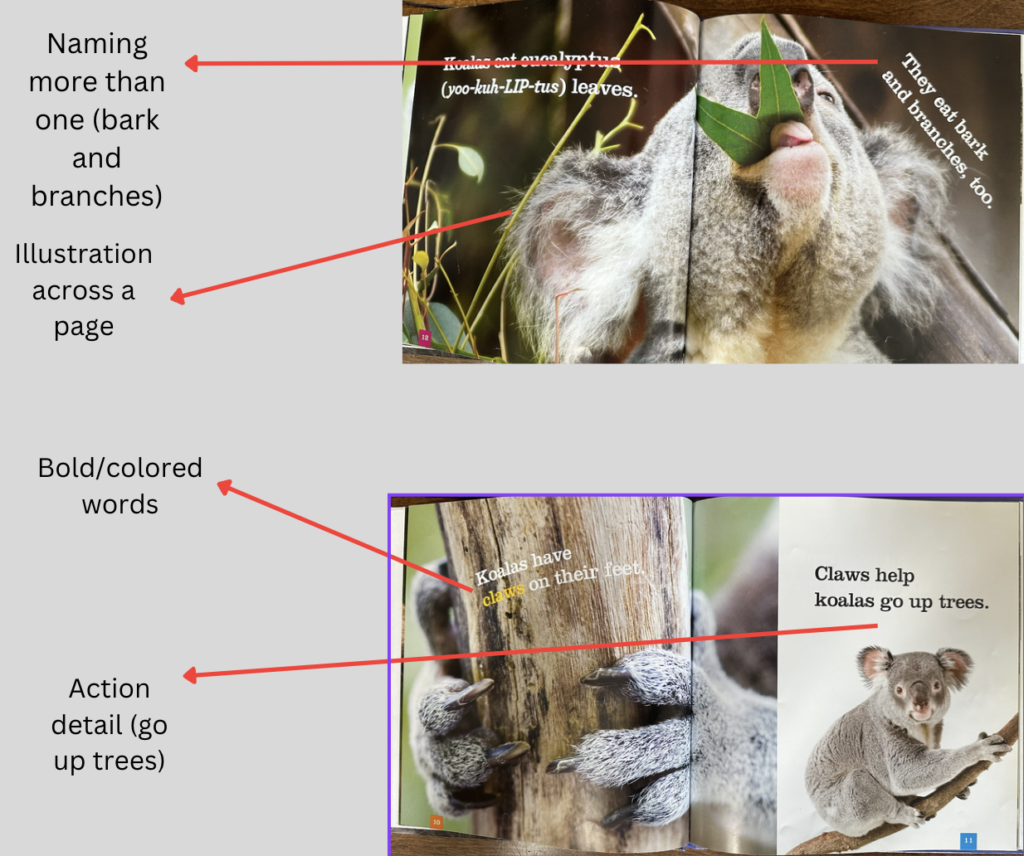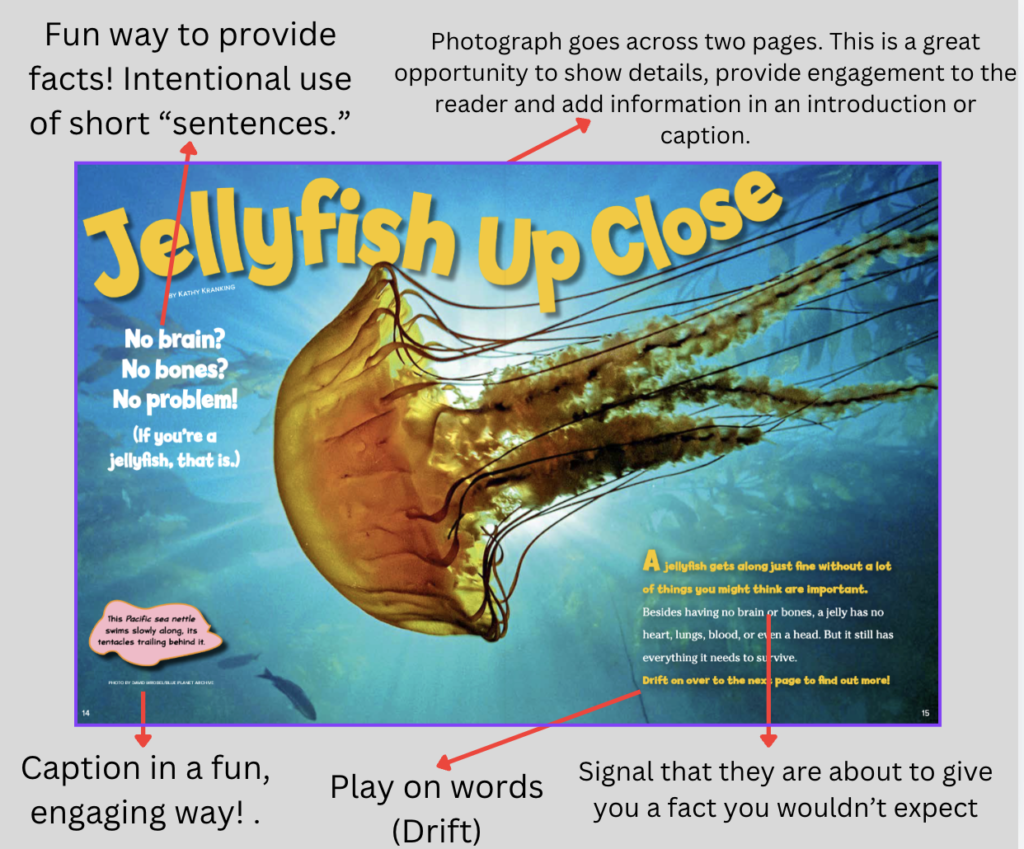Welcome back!
This is the third post in a series of blog posts on the topic of pulling teaching points from mentor texts. “How do you pull teaching points from mentor texts,” is one of the most often asked questions we get. And, it’s some of the best PD that I have facilitated with teachers. So much learning comes from when you put a stack of authentic real-world writing in front of teachers and you say “study what craft moves the author made.” It opens up the door to teaching writing in a way that is very engaging for the teacher and for the students. AND, you can address your standards through this process.
It’s our goal in this series of blog posts to show you the possibilities for teaching points from mentor texts. As we have worked with teams of teachers in the past, they often say, “I don’t even know what I am looking for.” So, we are giving you lots of possibilities of teaching points that MAY be in the mentor texts you are using.
This post will be structured in the following way:
- What genres are in informational writing?
- List of possible narrative teaching points
- Teaching points from a published piece (K-2 example and 3-6 example)
What Genres are in the Informational Writing Type?
If you’re wondering what I mean by informational type, you are not alone!
When I was in the classroom, I didn’t realize that narrative, informational and opinion/argumentative were writing TYPES, not genres. By studying the ACTUAL genres of narrative writing, you begin to see SO many possibilities for teaching and engagement.
We are starting with this before we get into teaching points because your teaching points may vary depending on the genre you choose. For example, if you choose a feature article, you will need to study how feature article authors choose to structure their writing about ONE topic. But, if you choose a list article, you will have many subtopics, often organized differently than a feature article. Click on the image below to get a document that has a list of some of the genres in each writing type.
Let’s continue our learning of genres with the document below. (Click on the image of the document below to get access to the Google Doc). This document defines various genres in the informational writing type.

For more explanation, see three genre images below that many teachers are not aware of. One of the most engaging parts of informational writing is all the various ways information can be written. It can be the traditional “all-about” way, but it could also be any of the ways below!
Literary Non-fiction
In this book, an African-American boy and his mom are riding in a canoe, observing the rich wildlife above and below the water. The text demonstrates how the animals they spot are interconnected, and at the end provides additional information about each animal featured. The boy’s a sensitive and perceptive role model, and by example encourages kids to be mindful of the environment.
Feature Article
The following article was taken from the August 2024 edition of Ranger Rick.
List Article
This article was taken out the December 2023 edition of Beanz magazine.
When choosing your genre type, you might consider the following:
- Which genre might complement your reading standards? Many informational writing types will complement your reading standards, such as standards on text features. But, there may be some that are more aligned with those standards than others. For example, a feature article may have more text features than some literary non-fiction. That’s not always the case, but sometimes it is.
- What genre do your kids rarely get a chance to write in during their K-6 journey? A new adventure with a genre they have never tried before could impact engagement dramatically.
- Which genres can you easily find mentor texts for? Finding mentor texts can take time, so devote a little time for this and see which genres you can easily find.
- Which genre do you love? Don’t discount your energy to teach a certain genre. This shouldn’t be the deciding factor, but the energy you bring to a unit will impact the energy your students have.
List of Possible Informational Teaching Points
Note: This is not an exhaustive list. As you look at mentor texts in your unit, you will likely add to this list.
A note to remember: When thinking about real-world authentic writing, don’t discount the importance of photographs and digital and features in your student’s writing. Yes, they should be writing and writing more than primary students, but a large degree of content that adults view in their daily life is visual. Teach your students to intentionally include visuals to teach.
CRAFT TEACHING POINTS
When we say craft teaching points, we are referring to the actual moves an author makes in their writing–not the process moves such as generating ideas and revising. This refers to aspects such as details, introductions, structure, word choice, focus, etc.
Detail Teaching Points
- Facts
- Definitions
- Statistics
- Citations
- Anecdotes
- The writer’s interjections and analysis
- Background information
- Comparison detail
- Color details
- Parts of details
- Action details
Focus Teaching Points
- Sticking to the topic
Structure Teaching Points
- Hook
- Introductory paragraph (yes, even in elementary!)
- Starting introductions with a wow fact
- Introductions that start with action
- Distinguishing fact to introduce a topic (what sets the sea lion apart from other animals)
- Introductions that put your reader in the “setting”
- Introductions that start with a quote
- Introductions with strong visualization
- Question introductions
- Transition words
- Paragraphing
- Ending with a call to action
- Ending with a quote
- Ending with a wow fact
Text Feature Teaching Points
- Alliteration in headings
- Play on words in headings
- Captions
- Fact boxes
- Bold words
- Diagrams
- Charts
Sentence structure
- Repetition to emphasize a point
- Short sentences to communicate meaning (such as an angry character)
- Longer sentences to describe something
- Dashes to add details
- The power of the ellipses
- Adding details with a series of items in a sentence
- Types of sentences
Illustration techniques
- Illustrations across a page – when to and when to not do this
- Multiple pictures on a page
- Setting details
- Motion lines
- Zooming in/zooming out
- When NOT to include background details
- Color to communicate a message
Conventions
- Use of punctuation, font and capitalization to communicate meaning.
- Punctuation within quotes
- Use of different types of sentences
Process Teaching Points
When we say process teachings points we are referring to the skill of using the writing process. The writing process cannot just be steps we walk our students through. Use of the writing process is a SKILL of a writer that has to be modeled, taught, reflected on, and reinforced.
Generating ideas
- Narrowing down ideas
- Mining mentor text for ideas
- Rehearsing ideas to see which is the best to write about
- Things, places and activities we love
- Things, places and activities we hate
Prewriting
- Different ways to prewrite (concept map, outline, sketch, topics and bullets, etc.)
- Do you like to spend a lot of time in pre-writing or flesh out ideas while you draft?
Drafting
- Just draft – don’t over think
- Talk to overcome writer’s block
- Maintaining energy to write
- Keep structure in mind
Revising
- To revise as I go or at the end
- WAYS to revise (post-it notes, drawing lines, another paper, etc.)
- WHAT to revise (word choice, sentence structure, etc.)
- Recopying is not revising
Publishing
- Using different tools to publish
Teaching Points from a Published Book/Magazine
Below we show you examples of teaching points. This should get you started in noticing the craft moves authors make, also known as reading like a writer. The most powerful part of you reading this blog is if you pull some published mentor texts, gather a group of teacher friends and analyze the books for teaching points, similar to what we did here.
Note: Keep in mind, students in grades K-2, will be using published picture books as their mentors. Students in grades 3-6 will use short stories and articles, such as those from magazines. The reason grades 3-6 is different is this: The mentor texts we use should be as similar as possible to the type of writing our kids will do. The majority of the time, we are asking our students in grades 3-6 to write short stories and short articles so those are the mentor texts we should be pulling.
Primary Mentor
Koalas by Kate Riggs


Grades 3-6 Mentor Text
Jellyfish Up Close, Ranger Rick, August 2024





